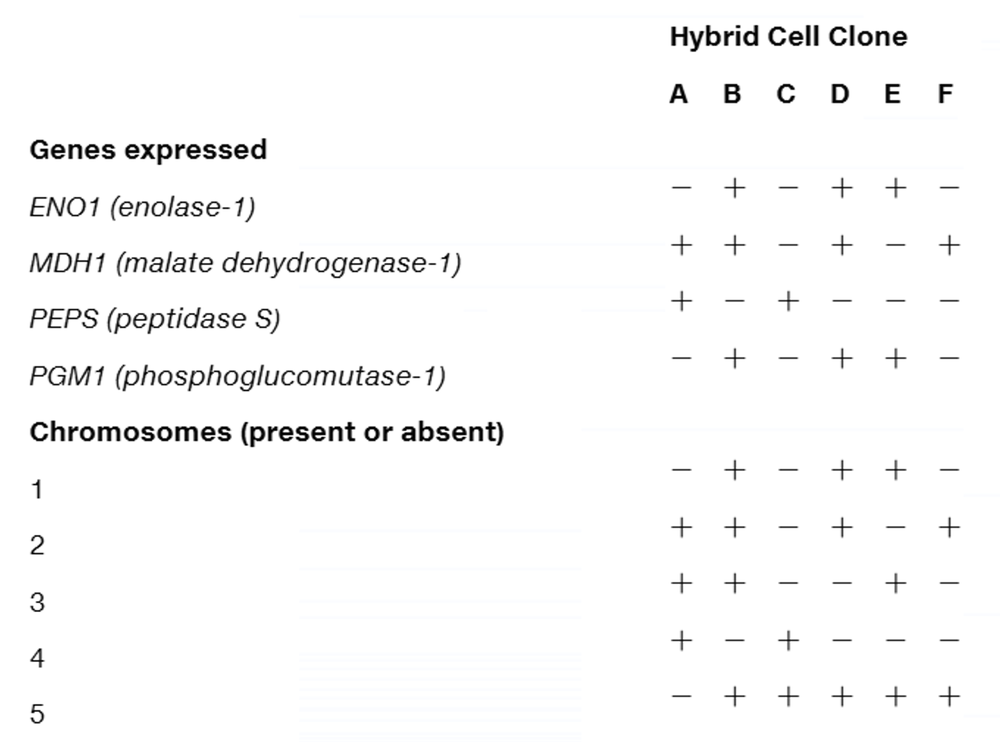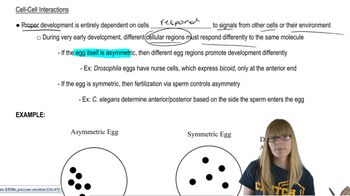Two plants in a cross were each heterozygous for two gene pairs (Ab/aB) whose loci are linked and 25 mu apart. Assuming that crossing over occurs during the formation of both male and female gametes and that the A and B alleles are dominant, determine the phenotypic ratio of their offspring.
Table of contents
- 1. Introduction to Genetics51m
- 2. Mendel's Laws of Inheritance3h 37m
- 3. Extensions to Mendelian Inheritance2h 41m
- 4. Genetic Mapping and Linkage2h 28m
- 5. Genetics of Bacteria and Viruses1h 21m
- 6. Chromosomal Variation1h 48m
- 7. DNA and Chromosome Structure56m
- 8. DNA Replication1h 10m
- 9. Mitosis and Meiosis1h 34m
- 10. Transcription1h 0m
- 11. Translation58m
- 12. Gene Regulation in Prokaryotes1h 19m
- 13. Gene Regulation in Eukaryotes44m
- 14. Genetic Control of Development44m
- 15. Genomes and Genomics1h 50m
- 16. Transposable Elements47m
- 17. Mutation, Repair, and Recombination1h 6m
- 18. Molecular Genetic Tools19m
- 19. Cancer Genetics29m
- 20. Quantitative Genetics1h 26m
- 21. Population Genetics50m
- 22. Evolutionary Genetics29m
4. Genetic Mapping and Linkage
Mapping Genes
Problem 28
Textbook Question
A number of human–mouse somatic cell hybrid clones were examined for the expression of specific human genes and the presence of human chromosomes. The results are summarized in the following table. Assign each gene to the chromosome on which it is located.

 Verified step by step guidance
Verified step by step guidance1
Step 1: Review the table provided in the problem, which lists the human genes expressed in each hybrid clone and the human chromosomes present in those clones. Identify the relationship between gene expression and chromosome presence.
Step 2: For each gene, determine which hybrid clones express the gene and note the human chromosomes present in those clones. This will help establish a correlation between gene expression and chromosome presence.
Step 3: Look for patterns where a specific human chromosome is consistently present in all clones expressing a particular gene. This suggests that the gene is located on that chromosome.
Step 4: Verify the assignment by checking if the gene is not expressed in clones where the corresponding chromosome is absent. This ensures the gene is correctly mapped to the chromosome.
Step 5: Assign each gene to the chromosome based on the analysis and document the results clearly, ensuring that each gene is matched to the correct chromosome.
 Verified video answer for a similar problem:
Verified video answer for a similar problem:This video solution was recommended by our tutors as helpful for the problem above
Video duration:
37sPlay a video:
Was this helpful?
Key Concepts
Here are the essential concepts you must grasp in order to answer the question correctly.
Somatic Cell Hybridization
Somatic cell hybridization is a technique used to combine two different types of cells, typically from different species, to create a hybrid cell. This method allows researchers to study gene expression and chromosome behavior in a controlled environment. In the context of the question, human-mouse hybrids are used to identify the location of specific human genes on human chromosomes.
Recommended video:
Guided course

Cell-cell interactions
Gene Mapping
Gene mapping is the process of determining the specific locations of genes on chromosomes. This involves analyzing the genetic material of organisms to establish which genes are associated with which chromosomes. In the question, gene mapping is essential for assigning human genes to their respective chromosomes based on the hybrid clones' characteristics.
Recommended video:
Guided course

Mapping Genes
Chromosomal Analysis
Chromosomal analysis involves examining the structure and number of chromosomes in a cell. This can include techniques such as karyotyping or fluorescence in situ hybridization (FISH) to visualize chromosomes and identify specific genetic material. Understanding chromosomal analysis is crucial for interpreting the results of the hybrid clones and determining the presence of human chromosomes in the study.
Recommended video:
Guided course

Chi Square Analysis
Related Videos
Related Practice
Textbook Question
1076
views


